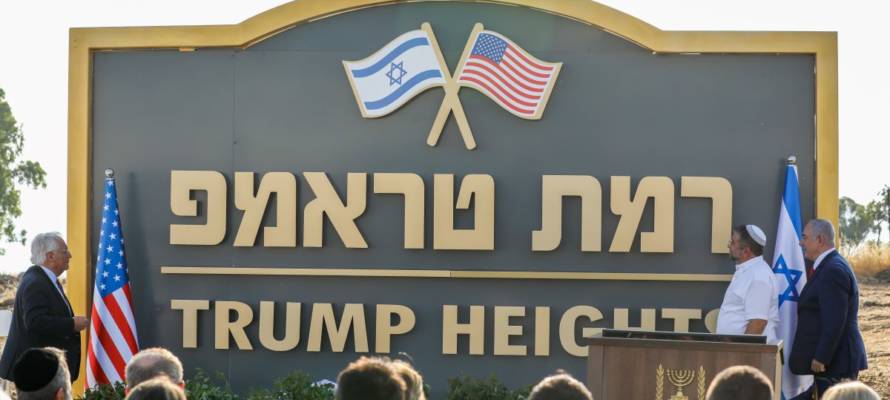“This is our home; this is the scenery of our homeland. And now, given this magnificent history, we must ensure that the future of the Golan Heights is even more magnificent,” Prime Minister Bennett stated.
By Aryeh Savir, TPS
The government will hold a special meeting at the Golan Heights in six weeks, during which it will unveil a national plan to double the number of residents in the Golan to 100,000.
The Ministry of Housing intends to market in the coming year 100 plots of land in Ramat Trump (Trump Heights), the new town named after former President Donald Trump following his recognition of Israeli sovereignty over the Golan Heights in March 2019.
According to a government decision, the population of the Golan Heights Regional Council and the city of Katzrin will be doubled so that by 2026, an additional 7,000 housing units will be marketed in the area, together with the expansion of existing communities and investment in local infrastructure.
Speaking at the Makor Rishon Golan Convention on Monday, Prime Minister Naftali Bennett said that “when we talk about the Golan Heights and fighting, the battles during the Yom Kippur war immediately come to mind, to save the Golan from the Syrian army. But the fighting began 2,000 years earlier in the days of the Second Temple during the Great Revolt, when the people of Gamla fought the Romans. Generations have fought and lived in this part of the country and sought to plant a stake in the ground.”
“Generations have fought over this beautiful section of the land, insisted on living on the hard ground and never gave up on the dream and vision buried on the Golan Heights. This is our home; this is the scenery of our homeland. And now, given this magnificent history, we must ensure that the future of the Golan Heights is even more magnificent,” he stated.
Israel gained control of the strategically important Golan Heights during the 1967 Six-Day War. The Knesset voted to annex the Golan Heights in December 1981.
However, Israel has deep historic roots in the area, with archeological findings from the biblical era and King David’s times.
The population on the Golan Heights grows on an annual basis and today stands at approximately 50,000.
Several countries, including Russia and Canada, have stated said they would not recognize Israeli sovereignty over the Golan.
